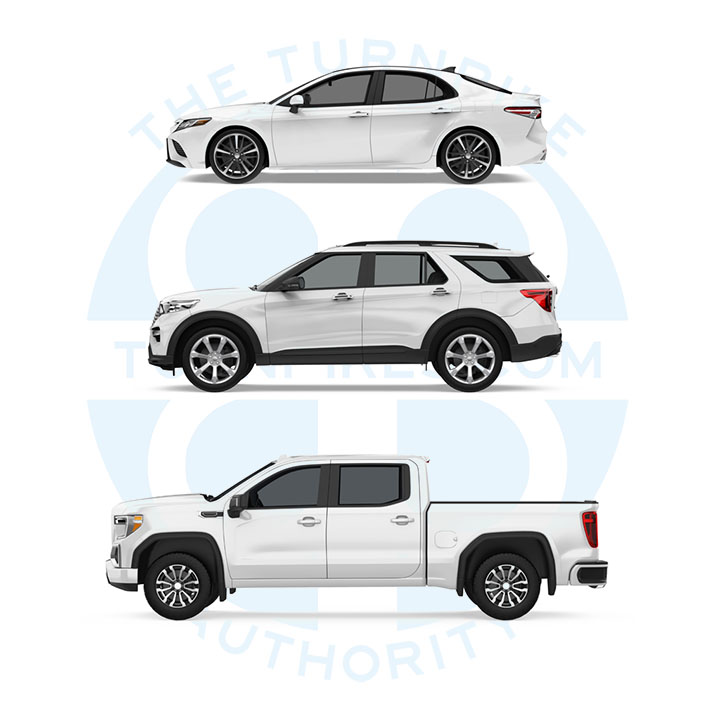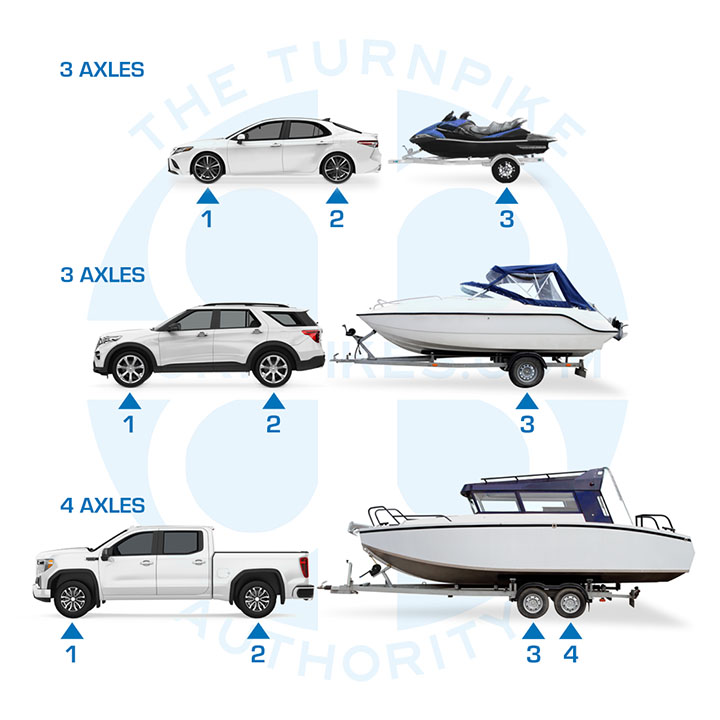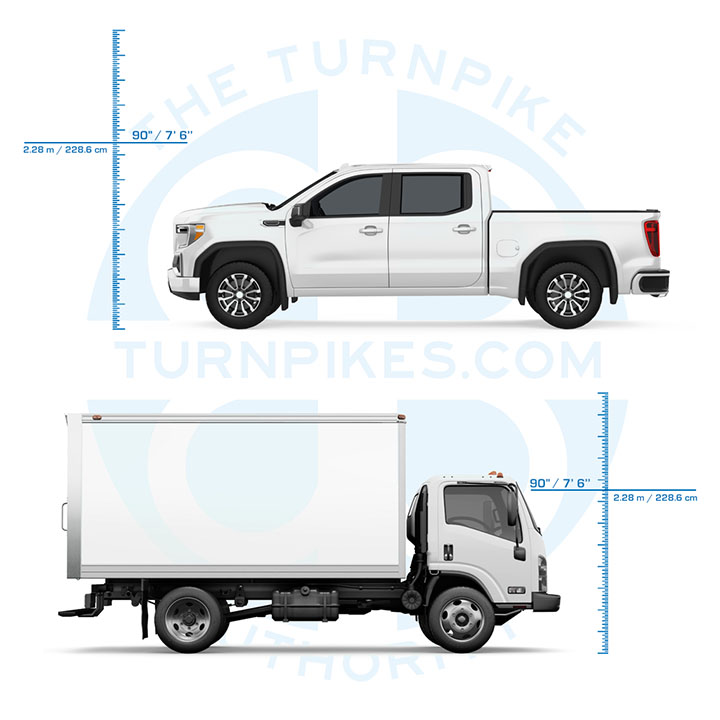Figuring Out Your Vehicle Class
Our easy, at-a-glance guide to what counts, especially when counting more than axles.
Regular Passenger Cars

The Two-Axle Vehicle
Most privately owned vehicles will fall into this category, with most facilities.
Two-axle cars, sport-utility vehicles, pickups, vans, and the like, will fall into the category of regular passenger cars.
There are special cases to keep in mind, however, as denoted below.
Watch it! The Dual-Tire Dilemma
Check for a separate dual-tire class or tandem-wheel class for your passenger vehicle, notably with pickups.
Example of single-tire axle configuration
Example of dual-tire axle configuration
In many jurisdictions, having dual tires on a pickup will have no impact upon the toll class. However, with some facilities, the dual-tire class is separate, even with regular pickups, which are usually classed as passenger cars.
Motorcycles: A Class On Its Own?
Check for a separate motorcycle class.
Motorcycles can count as two-axle vehicles, but …
Motorcycles can also have their own class.
While it is uncommon, some agencies will assess motorcycles at a lower rate than regular passenger cars. When this happens, the motorcycle will fall into a separate class.
Counting Axles

Count each axle with wheels on the ground.
Most cars and pickups without a trailer will be two-axle vehicles, while anything with a trailer will have more than two axles.
Simply count each axle that has wheels on the ground, and the total is your axle count.
Motorcyclists: A motorcycle counts as a two-axle vehicle, but a separate motorcycle class may still be used, depending upon the agency and roadway.
Measuring Vehicle Height

Measure the highest point of the vehicle supported by the front axle.
When an agency classifies vehicles by height, as well as by axle count, the way to determine height is relatively simple. You measure the tallest part of the vehicle over the first axle (front tires). This measurement, alone, determines vehicle height in nearly all cases.
In most jurisdictions, where height is used to asses a vehicle class, the threshold for a high vehicle is 90 inches, or seven feet, six inches. However, some international crossings and private bridge operators may use a higher or lower cutoff measure for high/low vehicles.



